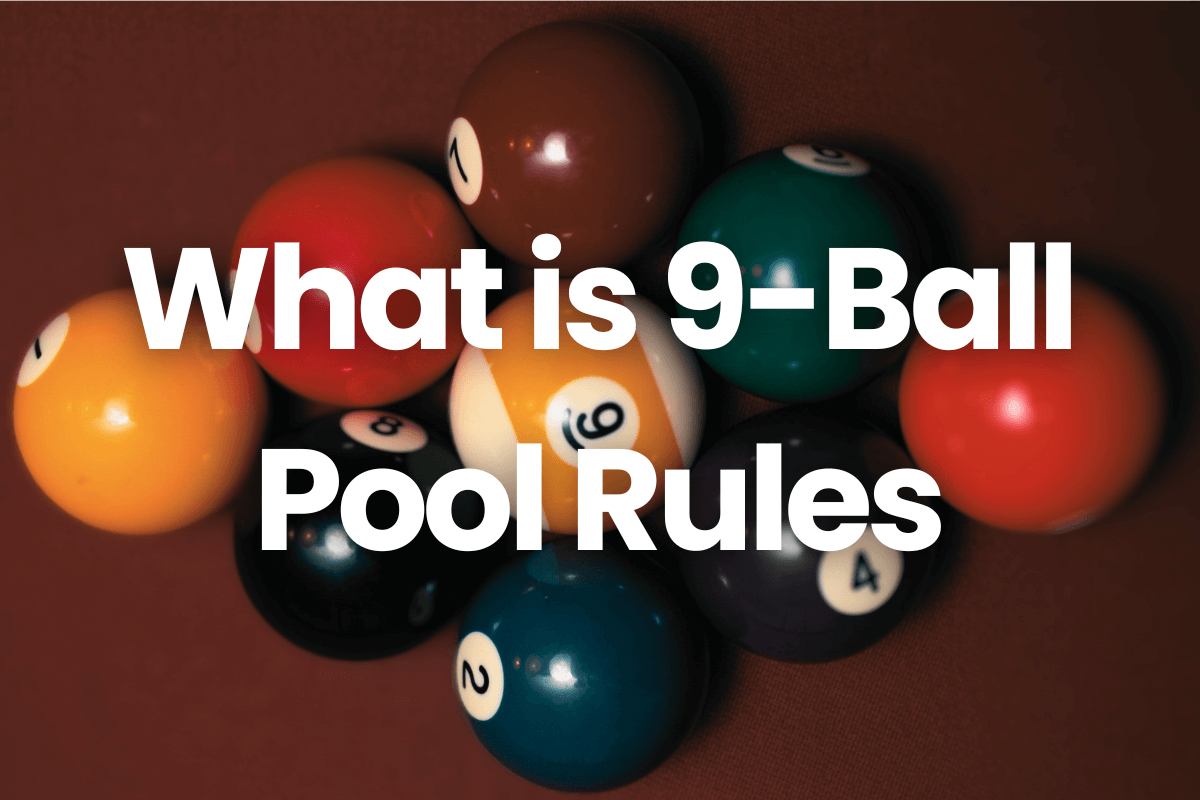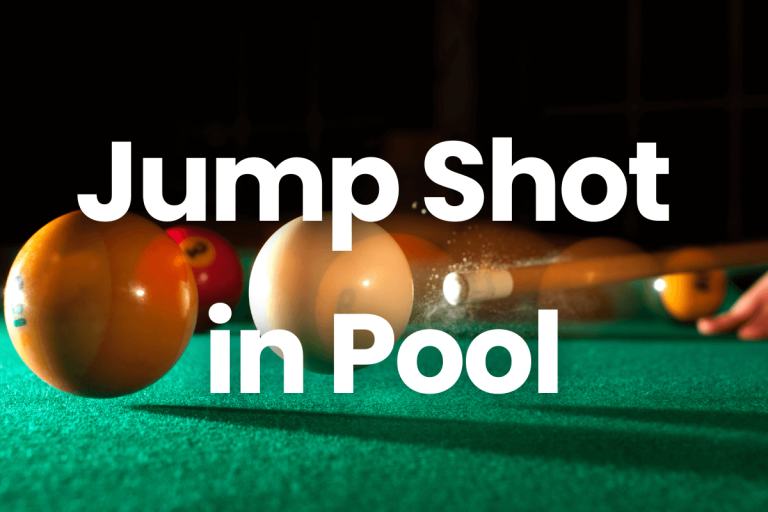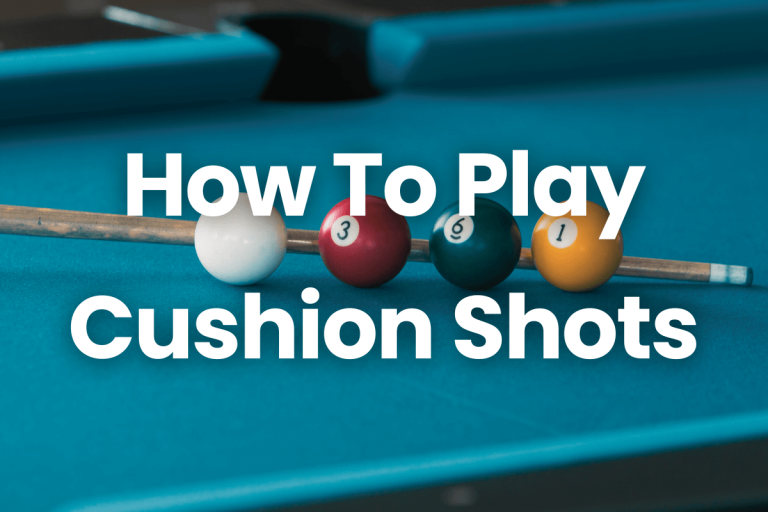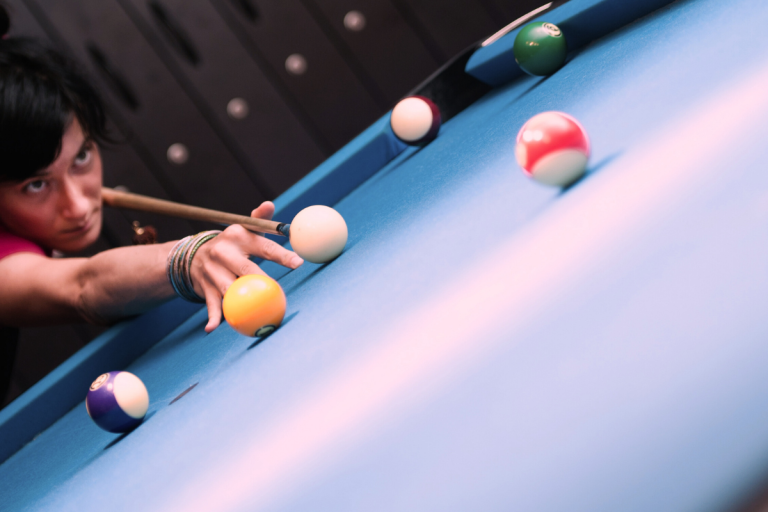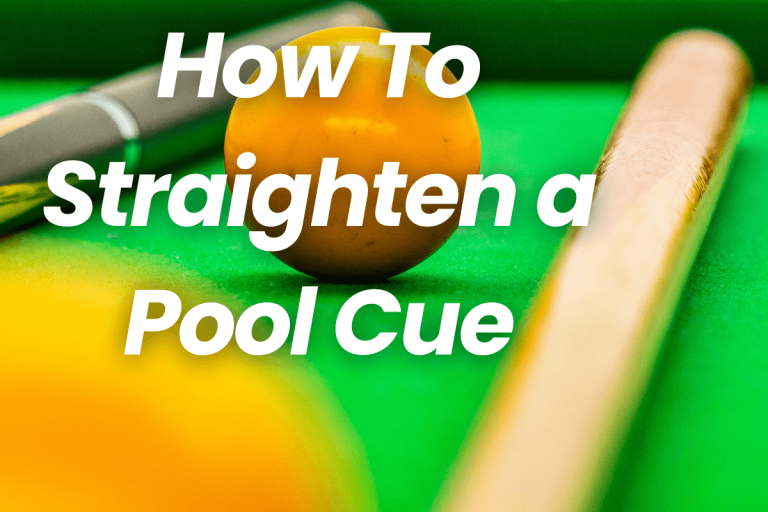Conquer the Table | 9-Ball Pool Rules Simplified Guide
9-Ball Pool, a dynamic and skillful billiards variant, has captivated players worldwide with its fast-paced gameplay and strategic depth. Renowned for its unique combination of precision, tactics, and flair, this game stands out in the cue sports arena. This article aims to demystify the intriguing world of pool, providing a clear understanding of 9-Ball Pool rules and strategies. Whether you’re a beginner or an experienced player, these insights will enhance your game and appreciation for this beloved sport.
What is 9-Ball Pool and its History
9-Ball Pool is a popular cue sport, a variation of billiards, where the primary objective is to pocket the 9-ball to win. It’s played on a rectangular pool table with six pockets, using a total of nine object balls numbered from 1 to 9 and a cue ball. Unlike other pool games, 9-Ball Pool is unique for its specific ball order and win conditions, offering a quicker and often more aggressive playing style.
The history of 9-Ball Pool traces back to the early 20th century in the United States, evolving from simpler pool games. It gained rapid popularity due to its straightforward yet challenging nature, making it a favorite in both casual and competitive scenes.
Equipment used in 9-ball pool
- A rectangular pool table, typically measuring 9 feet by 4.5 feet.
- Nine object balls, numbered 1 through 9, with the 9-ball being distinctively marked.
- A white cue ball used for striking the object balls.
- A pool cue, varying in length and weight, used by players to strike the cue ball.
- A rack, usually a diamond-shaped one, to set up the balls at the game’s beginning.
The Object of the Game
The primary goal in 9-ball pool is to legally pocket the 9-ball. This central objective gives the game its fast-paced and strategic nature. Unlike other pool variants where players aim to pocket all their assigned balls, in 9-ball pool, players can win at any point in the game, making each shot potentially game-deciding.
To win a game of 9-ball pool, a player must pocket the 9-ball in a legally acceptable manner. This can be achieved directly or via a combination shot, where the 9-ball is pocketed using another ball.
Specific rules that govern the process
Sequential Hitting: Players must hit the lowest-numbered ball on the table first. If the 9-ball is pocketed after the cue ball first contacts the lowest-numbered ball, it’s a legal win.
Fouls: If a player commits a foul, such as failing to hit the lowest-numbered ball first or pocketing the cue ball (a scratch), the opponent gets their turn with a ball-in-hand advantage.
Combination Shots: These are allowed and often used strategically to pocket the 9-ball early. However, the first ball struck in the combination must always be the lowest-numbered ball on the table.
Continuous Play: The game continues until the 9-ball is legally pocketed, regardless of how many other balls remain on the table.
Detailed Breakdown of 9-Ball Pool Rules
How to Set Up the Game: Rack Formation and Positioning
- The game begins with the balls arranged in a diamond-shaped rack.
- The 1-ball is placed at the apex of the diamond (front), centered over the foot spot on the table.
- The 9-ball is positioned in the middle of the rack.
- The other balls are placed randomly within the diamond, but the 1-ball and 9-ball must be in their designated spots.
- The rack is positioned so the apex ball is on the foot spot, and the base of the diamond is parallel to the end rail.
The Break Shot: Rules and Common Strategies
- The break shot in 9-ball pool is crucial and must be performed with the cue ball behind the head string.
- The player breaking must strike the 1-ball first and either pocket a ball or drive at least four numbered balls to the rails.
- A successful break (where no foul is committed) allows the player to continue shooting.
Turn Rotation and Foul Rules
- Players take alternate turns at the table.
- A player continues to shoot as long as they legally pocket a ball or don’t commit a foul.
- Fouls include failing to hit the lowest-numbered ball first, not driving any ball to the rail post-contact, pocketing the cue ball (scratch), or pocketing the 9-ball unlawfully.
- After a foul, the incoming player gets a ball in hand, meaning they can place the cue ball anywhere on the table for their shot.
Special Rules: Push-Out, Combination Shots, and Three Consecutive Fouls Rule
Push-Out: The player who performs the break has the option to declare a “push-out” on the shot immediately following the break. During a push-out, the player can hit the cue ball anywhere without the need to hit the lowest-numbered ball or call a pocket. Other players have the option to accept the table position or pass it back.
Combination Shots: These are legal and often strategically important. The only requirement is that the cue ball first makes contact with the lowest-numbered ball on the table. Combination shots can be used to pocket the 9-ball and win the game at any point, provided the rule of first contact is observed.
Three Consecutive Fouls Rule: If a player commits fouls in three consecutive turns at the table, they lose the game. The key aspect of this rule is that these fouls must occur without an intervening legal shot by the player.
Warning Requirement: It’s customary in most rulesets for the player to be warned after committing the second consecutive foul. This warning is important as it informs the player of the potential for losing the game should they foul again.
Resetting the Foul Count: If a player commits a legal shot after one or two consecutive fouls, their foul count resets to zero. The count of consecutive fouls does not carry over from one game to the next in a match.
Common Fouls in 9-Ball Pool
Failing to Hit the Lowest-Numbered Ball First
Players must always hit the lowest-numbered ball on the table first. Failing to do so results in a foul.
No Rail Contact After Contact with the Object Ball
After hitting the object ball, either the cue ball or any other ball must touch a rail.
Scratch (Cue Ball Pocketed)
Occurs when the cue ball is pocketed in any pocket on the table.
Jump Shot or Massé Foul
Illegally jumping the cue ball over another ball or performing an illegal massé shot.
Double Hit / Push Shot
When the cue stick makes contact with the cue ball more than once on a shot.
Potting the Wrong Ball
Pocketing any ball out of sequence (i.e., a ball other than the lowest-numbered ball on the table).
Pushing the Cue Ball
When the cue stick stays in contact with the cue ball for too long, it’s considered a push.
Three Consecutive Fouls
Committing a foul in three consecutive turns without a legal shot in between.
Interference
Any physical interference with the balls during a shot.
Understanding and avoiding these common fouls is crucial for effective play and maintaining a competitive edge in 9-ball pool rules.
Winning Strategies and Tips in 9-Ball Pool
Strategy for Ball Selection and Sequence
- Play in Sequence: Always aim for the lowest-numbered ball on the table, as hitting any other ball first is a foul.
- Plan Ahead: Think several shots ahead, not just about pocketing the current ball but also about positioning for the next shot.
- Use Combination Shots Wisely: Combination shots can be a quick way to win by pocketing the 9-ball early, but they require precision. Only attempt these if you’re confident in the shot and have a backup plan if it fails.
Advice on Cue Ball Control and Positioning
- Master Spin and Speed: Understanding how to apply spin (English) and controlling the speed of the cue ball are crucial. Topspin, backspin, and side spin can drastically affect the cue ball’s path after hitting the object ball.
- Position for the Next Shot: Always consider where the cue ball will end up after your shot. Aim for positions that make the next shot easier.
- Avoid Traffic: Try to keep the cue ball away from areas congested with other balls to reduce the risk of unintentional contacts or getting snookered.
- Safety Play: If a favorable shot isn’t available, consider playing a safety shot by positioning the cue ball in a spot that makes it difficult for your opponent to make a legal shot.
Additional Tips
- Break Effectively: Develop a strong, controlled break. A good break can set the tone of the game.
- Stay Calm and Focused: 9-ball pool requires concentration and mental stamina. Stay calm, especially in tight situations.
- Practice Tough Shots: Regularly practice difficult and common shots to build confidence and skill.
- Learn from Others: Watch professional players and learn from their strategies and shot selections.
9-Ball Pool Formats
Single Matches
Description: Single matches are one-on-one games where two players compete against each other.
Format: These are often played in a race-to format, where the first player to win a predetermined number of games wins the match.
Common in Casual Play: Single matches are typical in casual settings like pubs, clubs, or home game rooms.
League Play
Description: Leagues involve teams of players competing over a season, with each player typically playing in a set number of matches each night.
Team Scoring: Points are awarded based on individual match wins, and these contribute to the team’s overall league standing.
Season Structure: The league season usually culminates in playoffs where the top teams compete for the championship.
Tournament Play
Description: Tournaments are organized events where players or teams compete in a structured format over a short period, like a weekend or a specific number of days.
Formats: Common formats include single elimination, double elimination, and round-robin followed by elimination rounds.
Brackets and Seeding: Players or teams are often seeded based on skill level or ranking, and matches are organized into brackets.
Professional and Amateur Tournaments: Tournaments can range from local amateur competitions to professional world championships.
Handicap Systems
Purpose: In league and tournament play, handicap systems are often used to level the playing field between players of different skill levels.
How It Works: Players are assigned a handicap based on their ability, which affects scoring or the number of games needed to win.
Conclusion
The 9-ball pool is a blend of skill, strategy, and precision. Grasping its rules, from sequential ball targeting to mastering the break shot, is crucial. Effective cue ball control, strategic play, and understanding fouls elevate your game. As you step up to the pool table next time, remember these guidelines and embrace the challenge. With practice and strategic thinking, you can turn each match into a showcase of your growing prowess in the exciting world of 9-ball pool.
FAQs
Q: What happens if I accidentally pocket the 9-ball?
If you pocket the 9-ball but commit a foul (like not hitting the lowest-numbered ball first), the 9-ball is respotted. If no foul occurs, you win the game.
Q: Is it a loss if I scratch on the break?
Scratching on the break is a foul, but it does not result in a loss. The opponent gets the ball in hand anywhere on the table.
Q: Can I hit any ball in a combination shot?
In a combination shot, the cue ball must first contact the lowest-numbered ball on the table. Any ball can be pocketed after that, including the 9-ball.
Q: What is a push-out shot, and when can I play it?
A push-out shot is a strategic shot played immediately after the break shot. You can hit the cue ball anywhere without pocketing any ball or calling a shot. The next player can choose to take the shot or pass it back to you.
Q: Can I use the 9-ball to hit another ball in?
No, you cannot use the 9-ball to hit another ball in. The cue ball must always first contact the lowest-numbered ball on the table.
Q: What happens if two balls are pocketed on a shot?
If you legally pocket more than one ball on a shot, you continue your turn. Each pocketed ball counts, provided no foul is committed.
Q: Are jump cues allowed in 9-ball pool?
The use of jump cues depends on the rules of the tournament or venue. They are allowed in many professional settings, but some leagues and casual venues may prohibit them.

